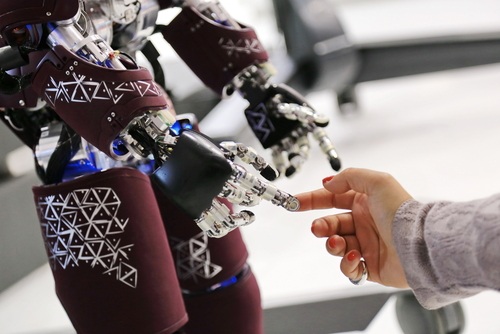Key Takeaways
- Google DeepMind teamed up with Ross Lovegrove to push design limits.
- They built an AI design tool that turns sketches into 3D chair models.
- The project uses Gemini models and Lovegrove’s drawing data.
- Rapid idea testing boosts human creativity and cuts design time.
- This marks a new era of AI-enhanced design innovation.
AI design tool brings nature-inspired chair to life
Technology and art meet when Google DeepMind partners with designer Ross Lovegrove. They aimed to explore how an AI design tool could blend nature’s beauty with futuristic form. As a result, they created a striking 3D-printed chair. The project proves AI can spark human creativity while speeding up design ideas.
How the AI design tool works with designer sketches
The team collected hundreds of Ross Lovegrove’s sketches. These drawings capture organic curves and patterns. Next, they fed the images into Gemini models. The AI design tool learned his style from that data. It then proposed new shapes that echoed Lovegrove’s vision. Designers could explore dozens of novel concepts in minutes. By rapidly tweaking details, they honed in on the perfect form.
Lovegrove guided the AI design tool at every turn. He chose which shapes felt true to nature. Then the system refined them for 3D printing. In this way, the tool amplified his design sense instead of replacing it. It acted as a creative partner rather than a purely automated system.
Why this partnership matters
This collaboration marks a shift in design approach. Traditionally, designers rely on sketches, clay models, or digital drafts. Each step can take weeks or months. However, an AI design tool can collapse that timeline. Rapid iteration lets teams try more ideas in less time. Furthermore, it frees designers to focus on big-picture creativity.
By using AI, Lovegrove could test bold ideas without wasting materials. The AI design tool suggested variations he might never imagine on his own. As a result, he uncovered forms that feel both natural and futuristic. Therefore, the chair blends aesthetics and innovation seamlessly.
The future of AI design
Looking ahead, AI design tools will become more common. Studios and architects might use them to explore buildings or furniture. With ever-larger datasets, these tools will learn from more artists and styles. Thus, they will offer even richer design ideas.
Moreover, AI design tools could help small teams compete with large firms. They can access advanced modeling power without huge budgets. In turn, this could democratize design and unlock fresh creative voices around the world.
What makes AI-enhanced design so powerful?
First, speed. Designers can pivot quickly from one idea to the next. Second, variety. The AI design tool generates dozens of options in minutes. Third, collaboration. It acts as a skilled assistant, helping teams refine their vision. Finally, sustainability. By testing ideas virtually, less physical material is wasted.
What’s next for designers
Designers will need new skills to work with AI design tools. They must learn how to guide algorithms toward the right style. They also need to understand the tool’s strengths and limits. In the future, design schools may teach AI literacy alongside sketching and model building.
However, human insight will remain vital. AI design tools depend on clear input and direction. They can’t replicate a designer’s intuition or taste. Therefore, the best results come when humans and machines collaborate closely.
A new era of creativity
This Google DeepMind and Ross Lovegrove project signals a turning point. It shows how AI design tools can enrich human talent. By blending nature-inspired art with cutting-edge algorithms, they open new creative doors. As this technology matures, we will see more inspiring objects and spaces shaped by human-AI teams.
The 3D-printed chair is just the beginning. It proves that rapid iteration and data-driven ideas can coexist with artistic vision. As a result, design work may become faster, more varied, and more sustainable. Ultimately, AI design tools promise a future where imagination meets innovation in every project.
Frequently Asked Questions
What is the AI design tool?
The AI design tool is a software system built by Google DeepMind and designer Ross Lovegrove. It uses Gemini models and a library of sketch images to generate new design concepts. Users can quickly explore multiple options and refine them for 3D printing.
How does it speed up design?
Instead of manually creating each concept, designers input sketches and parameters. The AI design tool then generates many variations in minutes. This allows rapid testing and selection of the best forms, cutting the usual timeline from weeks to days.
Will AI replace human designers?
No. The AI design tool acts as an assistant that amplifies creativity. Human designers still guide the style, choose the best ideas, and apply their intuition. Machines offer suggestions, but people make the final decisions.
Can small studios use this technology?
Yes. As AI design tools become more accessible, smaller teams can leverage powerful modeling without huge budgets. This levels the playing field and encourages fresh talent to explore advanced design methods.

